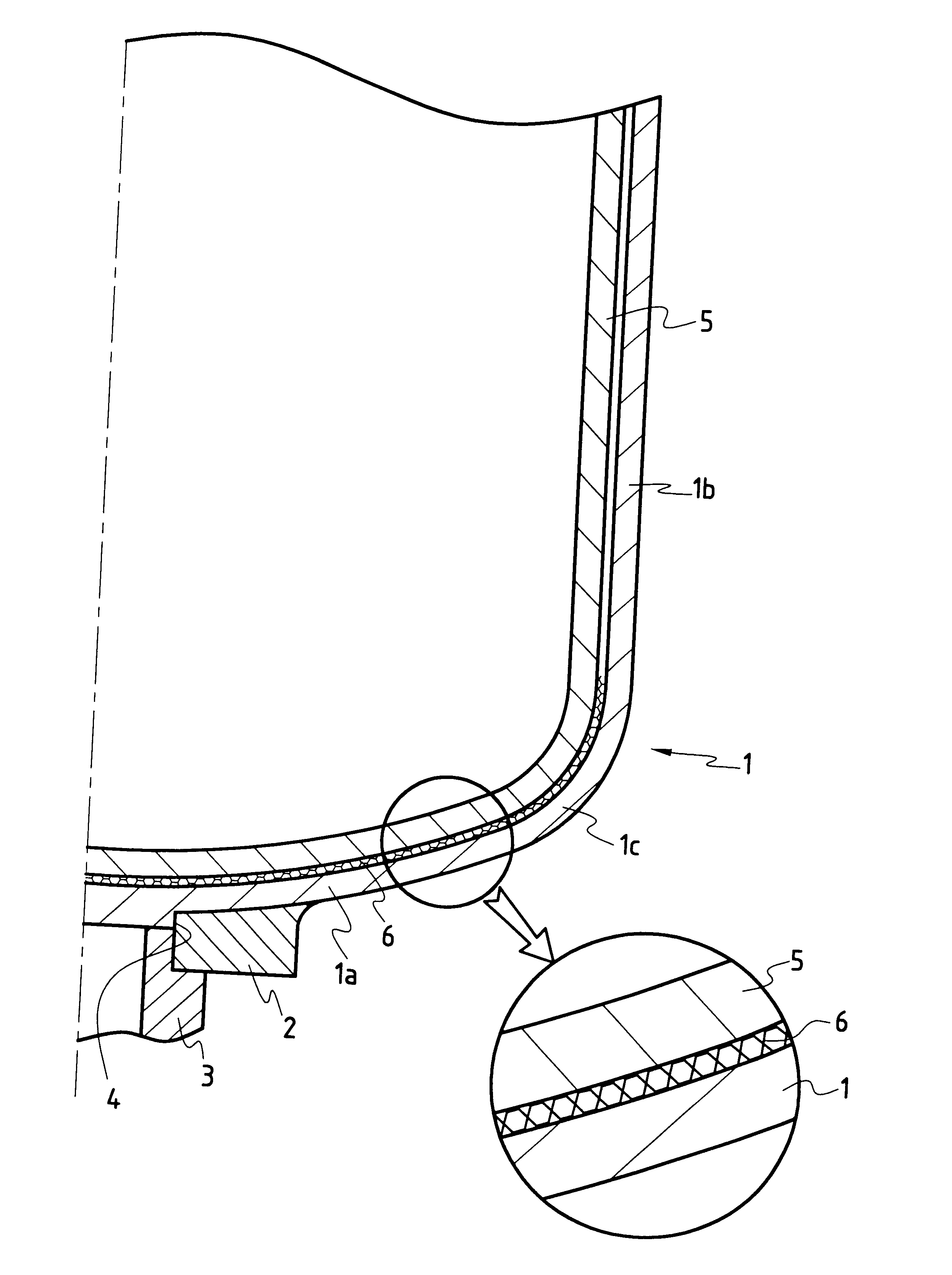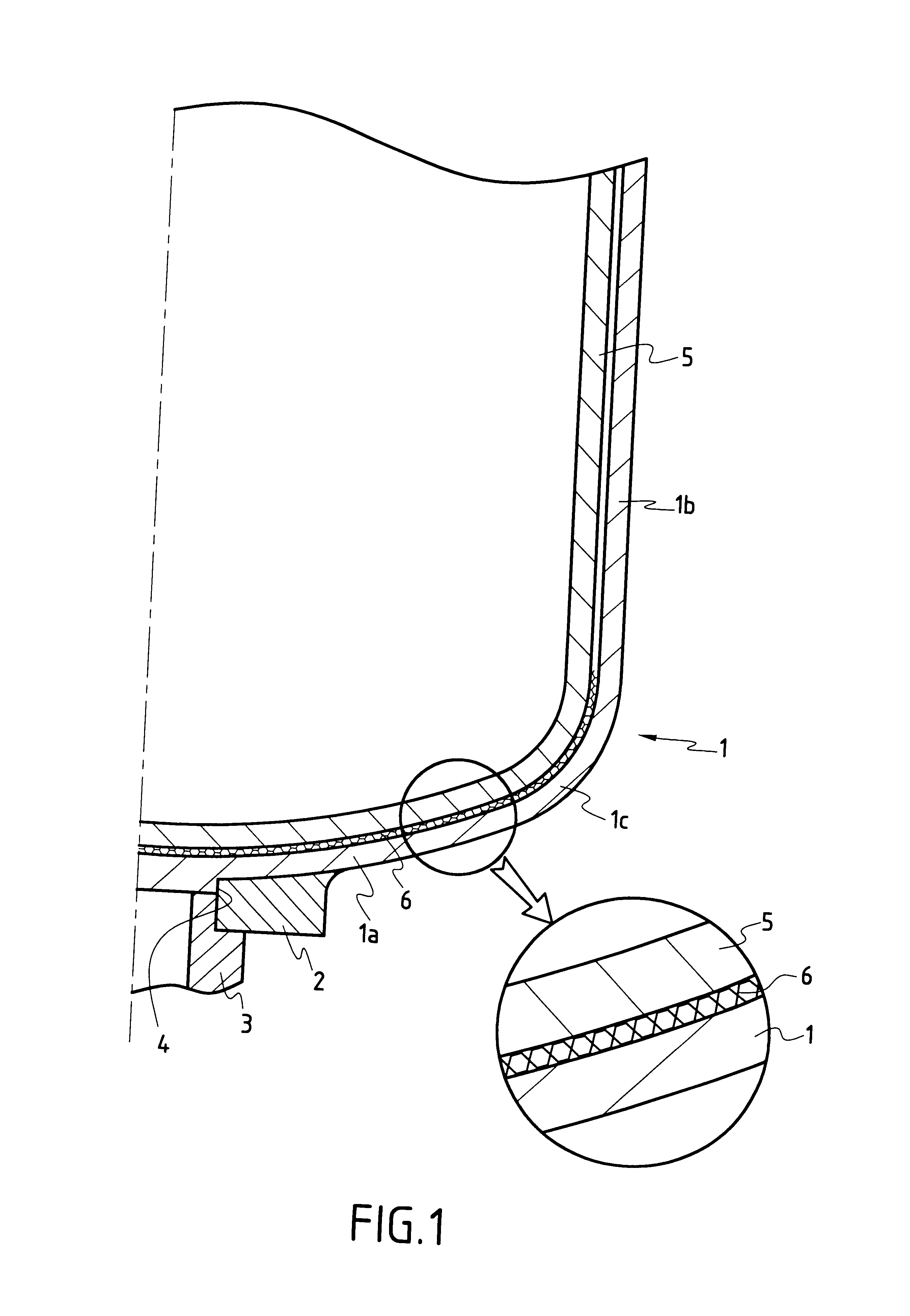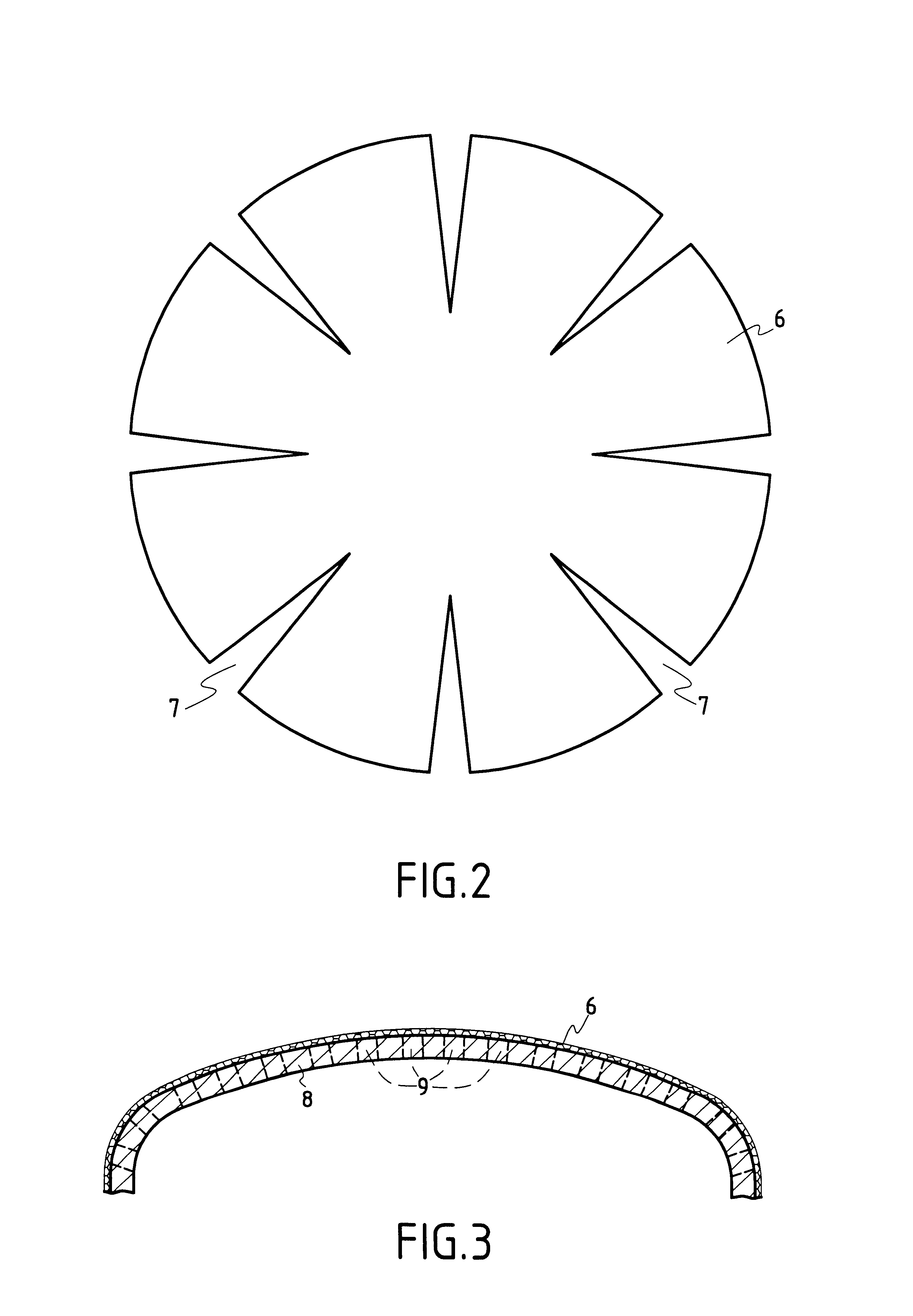Protection for a carbon material, in particular C/C composite, bowl that is to receive a crucible, such as a silica crucible for drawing silicon
a technology of carbon materials and protective fluids, applied in the direction of protective fluids, lighting and heating devices, furniture, etc., can solve the problems of limited contact area and achieve the effects of reducing the extent, reducing the cost, and limiting the mechanical stress
- Summary
- Abstract
- Description
- Claims
- Application Information
AI Technical Summary
Benefits of technology
Problems solved by technology
Method used
Image
Examples
example 1
A fiber fabric was made by knitting a commercially available 6K carbon yarn, i.e. a yarn made up of 6000 carbon filaments;
A lose interlock structure knit was used with the weight per unit area of the knit being about 300 grams per square meter (g / m.sup.2), and with the thickness of the knit being approximately equal to 1.5 mm.
The fabric was cut out to provide a disk having a diameter of 700 mm and carbon thread edging was used to prevent the fabric from fraying.
The resulting ply was placed on the bottom of a C / C composite bowl having a diameter of 22 inches (about 460 mm) so as to line the bottom of the bowl and the adjacent zone of the connecting portion prior to putting a silicon-containing crucible into place.
After a silicon crystal-drawing cycle, the crucible and the buffer ply were removed from the bowl, sometimes in pieces, and discarded. Because the buffer ply had been used, the bottom of the bowl presented very few traces of chemical attack (consumption of the bowl wall) or ...
example 2
A fiber fabric was made by weaving (plain weave) commercially available 1K carbon yarns. The resulting cloth was inserted into a chemical vapor infiltration oven to form a thin deposit of pyrolytic carbon on the fibers, the deposit having a thickness of about 0.5 .mu.m. A conventional gas was used containing methane as the carbon precursor.
The resulting cloth remained flexible and was cut using a water jet so as to obtain a shape similar to that shown in FIG. 2.
The shapable buffer ply that resulted therefrom was placed between the bottom of a bowl made of C / C composite material and a crucible.
After a silicon crystal-drawing cycle, and after the crucible and the residue of the buffer ply had been withdrawn, it could be seen that the bottom of the bowl presented very few traces of chemical attack or of mechanical stress.
PUM
| Property | Measurement | Unit |
|---|---|---|
| thickness | aaaaa | aaaaa |
| thickness | aaaaa | aaaaa |
| thickness | aaaaa | aaaaa |
Abstract
Description
Claims
Application Information
 Login to View More
Login to View More - R&D
- Intellectual Property
- Life Sciences
- Materials
- Tech Scout
- Unparalleled Data Quality
- Higher Quality Content
- 60% Fewer Hallucinations
Browse by: Latest US Patents, China's latest patents, Technical Efficacy Thesaurus, Application Domain, Technology Topic, Popular Technical Reports.
© 2025 PatSnap. All rights reserved.Legal|Privacy policy|Modern Slavery Act Transparency Statement|Sitemap|About US| Contact US: help@patsnap.com



